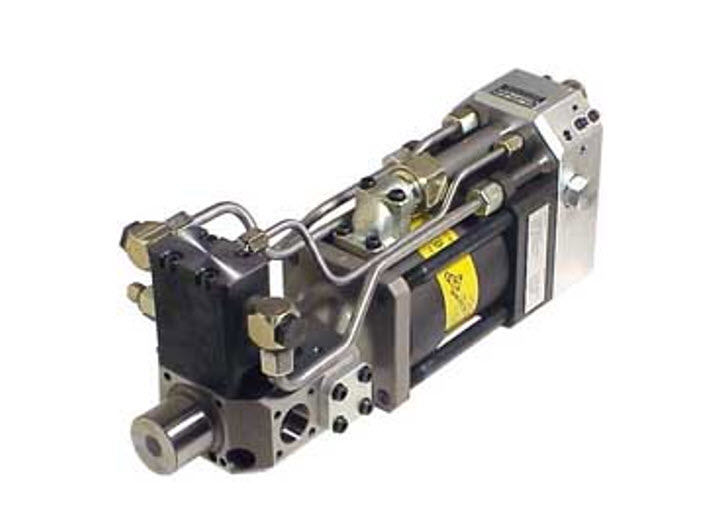Desired Application Performance Impacts Mix Head Choice
There is a proper tool for every task, and even for a material as versatile as polyurethane, that remains true. While there are a number of systems that work in concert to create the polyurethane mixture, few are as important in determining application success as the mix head.
Application parameters determine the specifics of the polyurethane mixture. With its nearly infinite forms and myriad uses — from rigid foam to flexible and everything in between — polyurethane can be adapted to what is required through the use of blending systems, gas nucleation equipment, and high- or low-pressure metering systems. Polyurethane foam mixing heads fall under this same umbrella.
A mixing head is straightforward in what it does. It mixes the chemicals supplied to it from a previous system and then distributes the resulting mixture. How and in what manner this mixture is distributed is determined by the need of the application. For instance, some applications need a spray, others require closed pouring, some need open pouring capabilities, and so on.
Choosing the right mix head for your application is critical and greatly increases the chances of success for the application and performance of the mixture. Let’s go over mix head systems and how they can be best implemented.
Ready to Get Started? Reach out to Linden Polyurethane to learn more about we support your goals or request a quote.
Match the Mix Head Style to Your Application
Straight-Style Mix Heads
Straight-style mix heads are ideal for closed-pouring applications that require longer nose lengths in order to reach the tooling. The precision-engineered mix heads feature a user-friendly and compact design. They come available in three different nose lengths to allow greater laminar flow and ensure pouring into hard-to-reach locations.
Linden’s Straight-Style mix heads support two or four streams and showcase unique alloys and specialized surface treatments on critical components — allowing them to remain accurate and reliable. A machined plunger for self-cleaning removes leftover material. And when not pouring, chemicals are recirculated to maintain correct ratios and the ideal temperature. Lastly, an electronic shot counter can help track maintenance needs.
L-Style Mix Heads
L-style mix heads are well-equipped to handle higher-pressure applications due to their design. This style of mix head creates highly effective mixtures and output options thanks to the arrangement of a pair of mixing chambers. These chambers are aligned perpendicular to one another and the chemicals counter-impinge in a small cylindrical chamber. The tool then uses a follow-up 90º angle for more thorough mixing that also ensures a more steady flow. After the chemicals mix, they are distributed.
At Linden, we provide two L-Style models, each complete with value-adding features.
Linden L-Style Mix Head
- Available in 2- and 3-stream and duplex variations
- Ideal for molded, flexible, and rigid foams as well as filled systems
- Mix ratios ranging from 1:1 to 3:1 to support your chemical mixing needs
- Splash-free pouring ensures your surface finish remains flawless
- Features an electric shot counter and advanced self-cleaning system
- Comes in a compact and user-friendly design for ease of use
Linden-Isotherm GP 600™
- Ideal for applications requiring a smaller output
- Supports incredible small shot sizes — only 3 grams!
- Mix ratios ranging from 1:4 to 4:1 using different chambers
- Features a modular design for customization
- Splash-free pouring into open or closed molds
- Metal-to-metal sealing ensures lasting reliability
Spray-Style Mix Heads
Unlike Straight-Style or L-Style mix heads that mix chemicals in chambers and then distribute them into molds or via flows, spray-style mix heads are meant to apply the material at a high-pressure direction onto a surface or part. This can be a protective coating, or a more foamy mixture commonly used for building insulation. With Spray-Style mix heads, the chemicals are delivered to the mix head through heated hoses to maintain the temperature and viscosity of the chemicals to ensure the resulting mixture performs as desired.
Linden-Isoterm Spray-Style mix heads can be outfitted with additional features to improve performance or ease of use. They’re available with either circulating or non-circulating capabilities, and different methods of actuation (hydraulic, pneumatic, or manual). They can be mounted via robotics or manipulators, or used as a hand-held. Finally, they’re also self-cleaning, with no solvents or flushing needed.
Which is best? Figure out which pentane-blowing agent is best for your specific application.
Need the Right Mix Head? Look to Linden
Linden Polyurethane has been designing, engineering, manufacturing, and servicing polyurethane foam mixing heads for nearly 40 years. Every system we produce is manufactured according to the specifications that support your production goals now and in the future, and made from precision-engineered components and the best materials.
We also service, test, and repair mix heads — ours and those of our competitors. We can troubleshoot your systems remotely thanks to our technology solutions, dispatch field technicians to your location, and conduct equipment and application testing in our 7,000-square-foot testing and production facility.
If you’re looking for a new mix head, need to identify a solution for a future product, or want to validate a mix head choice, Linden Polyurethane is here to support your success.





